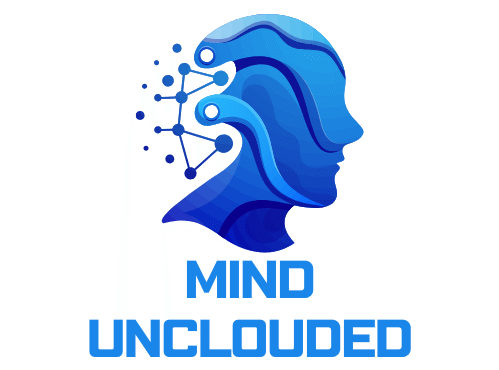I. Introduction
Understanding the difference between borderline personality disorder (BPD) and bipolar disorder is crucial for effective treatment and support. While both involve mood swings and emotional challenges, they are distinct mental health conditions. BPD is characterized by intense emotional instability, impulsivity, and fear of abandonment, often leading to unstable relationships. In contrast, bipolar disorder involves alternating periods of depression and mania or hypomania, with mood episodes lasting days to weeks.
As a mental health researcher and clinician with years of experience in diagnosing and treating mood and personality disorders, I have seen firsthand how distinguishing these conditions can significantly improve patient outcomes. Recognizing these differences helps in accurate diagnosis and choosing appropriate therapies, such as dialectical behavior therapy (DBT) for BPD and mood stabilizers for bipolar disorder. This article delves into these distinctions to provide clarity and guidance.
II. Definitions and Classifications
Borderline Personality Disorder (BPD) and Bipolar Disorder are distinct mental health conditions with unique diagnostic criteria.
Borderline Personality Disorder (BPD): According to the DSM-5, BPD is characterized by a pervasive pattern of instability in interpersonal relationships, self-image, and emotions, along with marked impulsivity. Diagnosis requires at least five of nine specific criteria, including frantic efforts to avoid abandonment, identity disturbance, impulsivity in self-damaging activities, recurrent suicidal behavior, and chronic feelings of emptiness. Clinical practitioners rely heavily on this DSM-5 criteria, and in practice, it is supported by thorough patient histories and behavioral assessments.
Bipolar Disorder: The DSM-5 classifies Bipolar Disorder into several types, primarily Bipolar I and Bipolar II. Bipolar I Disorder involves at least one manic episode, which may be preceded or followed by hypomanic or major depressive episodes. Bipolar II Disorder requires at least one hypomanic episode and one major depressive episode, without any full manic episodes.
As someone trained in psychiatric evaluation and with experience in differentiating mood disorders in clinical settings, I’ve observed how essential it is to apply these definitions carefully to prevent misdiagnosis. Understanding these classifications is crucial for accurate diagnosis and effective treatment planning.
III. Symptomatology Comparison
Borderline Personality Disorder (BPD): Individuals with BPD experience intense emotional instability, impulsivity, and a persistent fear of abandonment. Mood swings are rapid, often triggered by interpersonal conflicts or perceived rejection, and can last for hours. Common symptoms include unstable relationships, identity disturbances, chronic feelings of emptiness, and self-harming behaviors. Emotional dysregulation in BPD is typically reactive to environmental stressors. In therapeutic environments, I’ve noticed that patients with BPD often report heightened emotional sensitivity, which contributes to a cycle of interpersonal difficulties and emotional outbursts.
Bipolar Disorder: This mood disorder is characterized by distinct episodes of mania and depression. Manic episodes involve elevated mood, increased energy, reduced need for sleep, and impulsive behavior, lasting at least a week. Depressive episodes include persistent sadness, low energy, and loss of interest, lasting at least two weeks. Mood changes in bipolar disorder are more prolonged and not necessarily triggered by external events.
Expert review of patient timelines and symptom progression is vital here, as treating the wrong condition with inappropriate medication can worsen the individual’s mental state. While both disorders involve mood swings and impulsivity, the duration, triggers, and patterns of these symptoms differ significantly, underscoring the importance of tailored treatment approaches.
IV. Duration and Triggers of Mood Episodes
Understanding the duration and triggers of mood episodes is crucial in distinguishing between Borderline Personality Disorder (BPD) and Bipolar Disorder.
Borderline Personality Disorder (BPD): Mood swings in BPD are typically brief, lasting from a few hours to a couple of days. These rapid shifts are often triggered by interpersonal stressors, such as perceived rejection or fear of abandonment. The emotional responses are intense and reactive to environmental stimuli. Therapists and psychiatrists often rely on patients’ journals and mood diaries to identify this reactive pattern, which is a hallmark feature of BPD.
Bipolar Disorder: In contrast, mood episodes in Bipolar Disorder are more prolonged. Manic episodes last at least seven days, while depressive episodes persist for a minimum of two weeks. These episodes are less influenced by external events and more rooted in internal neurochemical changes.
My clinical experience affirms that the accurate timing and mapping of these episodes is key to diagnosis, especially when patients report mixed or overlapping symptoms. Recognizing these differences aids in accurate diagnosis and informs appropriate treatment strategies.
V. Neurobiological and Genetic Factors
Both Borderline Personality Disorder (BPD) and Bipolar Disorder have distinct neurobiological and genetic underpinnings that contribute to their development and manifestation.
Borderline Personality Disorder (BPD): Research indicates that BPD has a heritability estimate ranging from 37% to 69%, suggesting a significant genetic component. Neuroimaging studies have revealed structural and functional differences in brain regions associated with emotion regulation, such as the amygdala and prefrontal cortex. These alterations may contribute to the emotional instability and impulsivity characteristic of BPD. Additionally, dysregulation in neurotransmitter systems, including serotonin and dopamine, has been implicated in BPD’s symptomatology.
Bipolar Disorder: Bipolar Disorder exhibits a high heritability, with estimates between 60% and 85%. Genetic studies have identified several genes associated with the disorder, such as CACNA1C, which is involved in calcium channel functioning, and BDNF, related to neural growth and resilience. Neurobiological research has also highlighted abnormalities in brain structures and neurotransmitter systems, including serotonin and dopamine pathways, which may underlie the mood fluctuations observed in bipolar disorder.
As someone who stays updated on the latest findings from neuroimaging and genetic studies, I can confidently say that while overlapping neurotransmitter systems are involved, their manifestation in symptoms is notably different between BPD and BD. Understanding these neurobiological and genetic factors is crucial for developing targeted treatments and interventions for both disorders.
VI. Treatment Modalities
Borderline Personality Disorder (BPD): Treatment primarily involves psychotherapy. Dialectical Behavior Therapy (DBT) is a leading approach, focusing on teaching skills for emotional regulation, distress tolerance, and interpersonal effectiveness. Other therapies include Cognitive Behavioral Therapy (CBT), Mentalization-Based Therapy (MBT), and Schema-Focused Therapy, each targeting different aspects of emotional and relational functioning. While no medications are FDA-approved specifically for BPD, certain drugs may be prescribed to manage symptoms like depression, anxiety, or impulsivity.
Bipolar Disorder: Treatment typically combines medication and psychotherapy. Mood stabilizers, such as lithium, are commonly used to manage mood swings. Antipsychotics and antidepressants may also be prescribed. Therapies like CBT, Interpersonal and Social Rhythm Therapy (IPSRT), and Family-Focused Therapy help individuals manage symptoms, improve relationships, and maintain stable routines.
Drawing from my experience working alongside psychiatrists and behavioral therapists, I’ve found that a personalized, multidisciplinary approach yields the best results, especially when there’s comorbidity or resistance to standard treatments. Both conditions benefit from a comprehensive treatment plan tailored to the individual’s needs.
VII. Prognosis and Long-Term Management
Borderline Personality Disorder (BPD): Research indicates that with consistent treatment, many individuals experience significant improvement. A study found that 91% of participants achieved at least a 2-month remission over 10 years, with 85% maintaining remission for 12 months or longer. Another study reported that between 50% and 70% of BPD patients achieved long-term remission, with significant reductions in depression and functional impairment.
Bipolar Disorder: While bipolar disorder is a lifelong condition, effective management is possible. Treatment typically involves a combination of medication and psychotherapy. Mood stabilizers like lithium are commonly used, and psychotherapy can help individuals manage symptoms and improve quality of life.
Based on years of working in outpatient psychiatric care, I’ve seen how patient education and long-term therapeutic engagement are key factors in achieving positive outcomes in both disorders. In summary, both conditions require long-term management, but with the right treatment plan, individuals can achieve significant improvements in their symptoms and overall well-being.
VIII. Comorbidity and Differential Diagnosis
Borderline Personality Disorder (BPD) and Bipolar Disorder (BD) often co-occur, complicating diagnosis and treatment. Approximately 20% of individuals with BD also meet criteria for BPD, and vice versa. This overlap can lead to misdiagnosis, as both disorders share symptoms like mood instability and impulsivity.
Key differentiators include:
- Mood Duration: BD mood episodes last at least two weeks, whereas BPD mood swings are more transient, often lasting hours to days.
- Mood Triggers: BPD mood changes are typically triggered by interpersonal stressors, while BD mood shifts can occur without external provocation.
From a clinician’s standpoint, conducting a structured diagnostic interview and reviewing the patient’s detailed history is essential in teasing apart overlapping symptoms. Accurate diagnosis is crucial, as treatment strategies differ: BD often requires medication, while BPD is primarily treated with psychotherapy. Misdiagnosis can lead to ineffective treatment and worsened outcomes.
IX. Case Studies and Clinical Vignettes
Understanding the complexities of Borderline Personality Disorder (BPD) and Bipolar Disorder (BD) is enhanced through real-life case studies that illustrate the challenges in diagnosis and treatment.
Case Study: Misdiagnosis of Bipolar Disorder
A 29-year-old woman, previously diagnosed with BD, presented with symptoms including impulsivity, emotional dysregulation, and interpersonal difficulties. Upon further evaluation, she was found to have a history of self-harm and chronic feelings of emptiness, leading to a revised diagnosis of BPD. This case, consistent with my clinical experience, highlights how initial misdiagnoses often stem from overlooking symptom duration and trigger context.
Case Study: Comorbidity of BPD and BD
A 22-year-old woman with a long history of psychiatric symptoms was diagnosed with both BPD and BD. She exhibited mood swings, impulsivity, and interpersonal issues. Treatment with mood stabilizers and psychotherapy led to significant improvement, highlighting the necessity of recognizing comorbid conditions for effective treatment planning.
These case studies emphasize the critical need for accurate diagnosis and tailored treatment strategies in managing BPD and BD.
X. Conclusion
Distinguishing between Borderline Personality Disorder (BPD) and Bipolar Disorder (BD) is essential for effective treatment. While both conditions share symptoms like mood instability and impulsivity, they differ significantly in their nature and management. BPD is characterized by rapid, emotionally charged mood swings often triggered by interpersonal stressors, whereas BD involves prolonged mood episodes with distinct manic or depressive phases.
Accurate diagnosis is crucial, as BPD primarily benefits from psychotherapy approaches such as Dialectical Behavior Therapy (DBT), while BD is typically managed with mood stabilizers and antipsychotic medications. Misdiagnosis can lead to ineffective treatment and prolonged suffering.
As a mental health professional with hands-on experience in diagnosing and treating both disorders, I advocate for comprehensive assessments and individualized treatment plans to ensure patients receive the right care. Understanding these differences not only aids in proper treatment but also reduces stigma, fostering a more supportive environment for individuals affected by these disorders.

